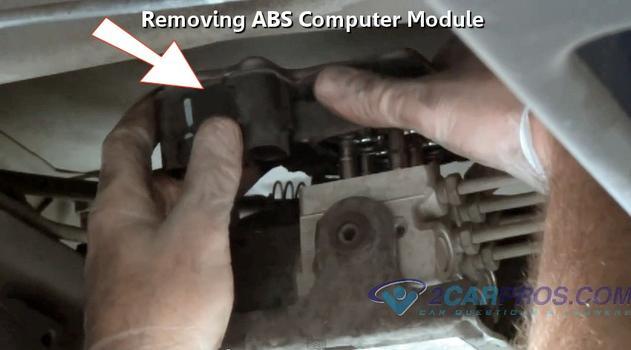Good afternoon.
This sounds like a failed master cylinder. The internal seals are not holding causing the pedal to sink when the engine is running.
https://www.2carpros.com/articles/brake-pedal-goes-to-the-floor
https://www.2carpros.com/articles/how-to-bleed-or-flush-a-car-brake-system
I would replace the master and bleed the system. The ABS has to be bled with a scan tool to open the valves for air to get out.
Roy
STANDARD PROCEDURE - ABS BRAKE BLEEDING
ABS system bleeding requires conventional bleeding methods plus use of a scan tool. The procedure involves performing a base brake bleeding, followed by use of the scan tool to cycle and bleed the HCU pump and solenoids. A second base brake bleeding procedure is then required to remove any air remaining in the system.
Perform base brake bleeding (Refer to 05 - Brakes - Standard Procedure) .
Connect scan tool to the Data Link Connector.
Select ANTILOCK BRAKES, followed by MISCELLANEOUS, then ABS BRAKES. Follow the instructions displayed. When scan tool displays TEST COMPLETE, disconnect scan tool and proceed.
Perform base brake bleeding a second time (Refer to 05 - Brakes - Standard Procedure) .
Top off master cylinder fluid level and verify proper brake operation before moving vehicle.
ALL EXCEPT HYDROBOOST
NOTE:
If master cylinder is replaced bleed cylinder before installation.
NOTE:
Make sure the output rod of the brake booster is in position and retained by a output rod retaining ring, by looking into the boosters master cylinder mounting hole. This position will enable the output rod to enter inside of the master cylinder plunger sleeve during installation. Proper position is obtained when the output rod is centered perpendicular to the master cylinder mounting hole.
NOTE:
Prior to installing the master cylinder assembly check that there is a vacuum seal present at the shoulder of the master cylinder flange and it's neck. A square seal must be present to ensure vacuum integrity with the booster.
imageOpen In New TabZoom/Print
NOTE:
Take precautions to locate the master cylinder plunger over the booster output rod, before installing the master cylinder. If correctly fitted the master cylinder should slide easily onto the booster output rod before the mounting studs are engaged in the flange holes of the master cylinder.
Gently install the master cylinder (9) on the mounting studs (7).
Install new mounting nuts and tighten to 25 N� m (221 in. lbs.)
Install the brake lines and tighten to 26 N� m (230 in. lbs.)
Reconnect the electrical connector for the low fluid level switch.
Fill and bleed the base brake system. (Refer to 05 - Brakes - Standard Procedure) .
Start engine and let idle for approximately 30 seconds, then turn off and wait about 1 minute. Fully stroke brake pedal to assure there are several strokes with assist prior to depletion of vacuum. If not, check for missing seal between master cylinder and booster.
Friday, June 19th, 2020 AT 10:32 AM


